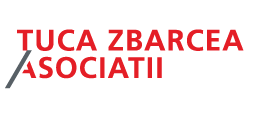Real estate is undoubtedly one of the sectors affected by the COVID-19 health crisis. The full economic impact of the pandemic is still unclear, but all real estate stakeholders are anticipating that by end of this year of the first quarter of 2021, they will have a better grasp on the effects and sufficient data in order to be able to discuss mitigating factors and make some predictions. Strong real estate players will begin, or continue to look for, opportunities to expand or diversify their portfolios, while investors on the verge of implementing exit strategies may need to revisit the exit terms and structure.
While the financing of real estate developments may slow down or be subject to more conservative terms and conditions (in particular for certain asset classes), financed portfolio or even single asset swaps may be on the rise. Unlike in typical “acqfin” structures, where lenders finance the buyer of a target, in “real estate acqfin” lenders seek to adhere to real estate finance principles looking for structures in which they can finance the target itself, as owner of the real estate asset. And so the question arises - how can buyers secure their financing for a real estate acquisition, if their target must also be the borrower?
Real estate acquisitions - a different kind of acqfin?
In a typical acquisition finance structure, lenders finance the buyer, usually via a special purpose vehicle established for the acquisition. In this type of structure, prior to disbursement, the lenders look for security over the buyer’s shares, its rights, claims and/or receivables under the acquisition agreement, and the buyer’s other assets, such as its accounts. This security package is sufficient to ensure disbursement on closing of the acquisition, where the financing is used to pay part of the purchase price. The target’s shares, and (subject to any financial assistance restrictions) its other assets will also fall within the security net, but most often as a condition subsequent to disbursement and closing, when the target accedes to the facility agreement as additional obligor (borrower and/or guarantor).
The structure set out above, typical in Romania and across CEE, is a cash-driven structure. Lenders and their advisors assess the transaction with a focus on the target’s business, timing and post-acquisition corporate reorganization (such as a merger between the acquisition vehicle and the target), the ability of the buyer to service the debt, and the ability of the target to upstream cash towards the buyer, until the group reorganization is completed.
In a real estate acquisition, the structure is driven by the lenders’ requirement to have the financing secured at the outset on the real estate asset, and the asset’s income stream. This stems from customary real estate finance structures, where the asset and its income constitute the financing’s security.
In our experience, the bankers involved in classic real estate financings are the same ones involved in financing the acquisition of real estate assets, for various reasons, including their market knowledge, relationship with sponsors, and their familiarity with facility agreement provisions (such as financial covenants, reporting, other ongoing obligations and events of default).
As banks are looking to finance against the real estate asset when approving the transaction, the focus turns on being able to provide a complete (or nearly complete) real estate security package as a condition precedent to disbursing the facility. With the target company as owner of the real estate asset, the requirement for security usually translates into a requirement for the target company to act as day-one borrower.
Closing day
If the acquisition implies a bank debt element and the loan is approved on real estate financing principles, a bankable deal requires the seller and the buyer to build in certain closing day elements which are absent from a real estate acquisition with no bank debt. Several approaches have been tested and employed over time, each of which has its own benefits and drawbacks.
A seemingly simple approach would be for the seller to accept that its subsidiary, i.e. the target, enters into the facility agreement as a borrower, and provides security in favor of the lenders, prior to closing under the acquisition agreement. In this way, that part of the purchase price which is paid through bank debt is made available to the target and secured on its assets. This will require the seller, as existing shareholder of the target, to make arrangements (including corporate approvals) for the target entering into the financing transaction.
This approach works best if the purpose of the facility is to refinance existing bank debt and/or shareholder loans at the level of the target. The refinancing provides the target with the necessary corporate benefit for entering into the transaction, mitigates potential financial assistance risks and will be accounted for as part of the purchase price under the acquisition agreement.
That being said, the seller may not be too keen on its target-subsidiary entering into the credit arrangement prior to closing under the acquisition agreement. This is understandable for several reasons, including the risk that the closing falls through, the fact that the terms of the credit agreement would typically be negotiated by the buyer as future shareholder and the seller may have very limited access to the financing documentation. Review and access by the existing shareholder to finance documents and commercial terms negotiated by the future shareholder requires a very precise balancing act between confidentiality concerns raised by the buyer, and the commercial and legal comfort that the existing shareholder requires in order to agree to the refinancing. At the very least, the seller will be looking to put in place a satisfactory unwinding agreement to make sure that all finance documents entered into between the target and the buyer’s financing banks will be irrevocably and unconditionally unwound if the closing falls through.
Another, more palatable approach for sellers, is for the buyer, as new shareholder of the target, to approve the financing documentation on its own, prior to closing under the acquisition agreement.
In a share deal, this will require the transfer of shares to the buyer upon partial payment of the purchase price (i.e. prior to receiving that part of the purchase price that is paid from bank debt). Typically this type of structure requires two elements in the overall purchase price – financing the acquisition of the target’s shares from the buyers’ equity, and repayment of the target’s debt owed to the seller’s group, from the bank debt. Finding a way to balance the interests of all players involved is still required. The seller is transferring ownership of target shares against receipt of only part of the purchase price. The buyer is taking ownership of a target which continues to owe significant debt to the seller group. The financing banks want to make sure that the transfer of shares is valid and enforceable against the parties, and that, apart from drawing the loan, no other conditions precedent to closing under the acquisition agreement are outstanding.
To mitigate such apparently competing interests, the transaction will rely on closing both the financing and the acquisition on the same day, with or without an escrow arrangement. A formal escrow agreement may add another set of interests to cater to (those of the escrow agent even in the simpler scenario where the escrow agent is part of the lender’s group), as well as increase transaction costs. To avoid this, parties will seek comfort in a documentary escrow, set out in the transaction documents. Conditions precedent will largely be met prior to the closing date, the buyer and the financing banks will review and confirm transfer documentation on the closing date, and the loan will be disbursed and paid to the seller on the closing date.
An asset deal will track the steps above, with the target assets (including real estate, agreements and permits) being transferred from the seller to the buyer’s special purpose vehicle prior to disbursement of the loan. The transfer will be performed against consideration payable from equity, and once completed will allow the buyer’s vehicle (now owner of the operational real estate asset) to enter into the security documents and access the bank financing, in view of refinancing existing debt. However, transfer and registration formalities are less conducive to a one-day closing arrangement. Asset deals are also unusual for the market, due to higher costs and formalities associated with the transfer and registration.
How to prepare the acquisition
The possible closing date structures set out above are not exhaustive, and each acquisition financing is tailored to address the parties’ interests and the commercial specifics. However, where part of the purchase price is paid from bank debt, they all have one element in common. The terms and conditions of the acquisition agreement need to accommodate the conditions and strictures of the financing agreement. Buyers would be well advised to open the dialogue with the financing banks at the very early stages, ideally prior to signing the acquisition agreement, to accommodate particular terms and conditions which require the seller’s co-operation and to make sure that the closing mechanics under both agreements are aligned. This ensures “bankability” of the acquisition agreement.
Finally, when acquiring a real estate asset, sponsors should also consider the exit strategy, in particular if the exit is planned within a relatively short period of time. Maintaining debt at the level of the target, and considering the corporate structure of the target or group of targets is likely to make for a more time- and cost-efficient sale.
By Simona Marin, Partner, Dentons




